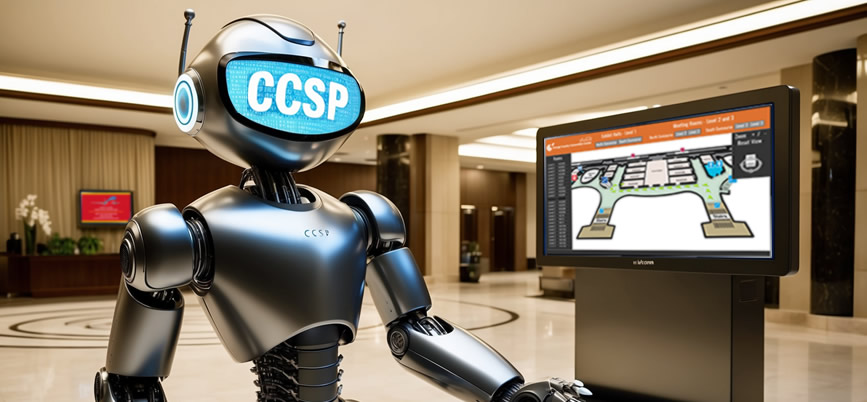
When organizing large-scale events, one of the biggest challenges faced by event planners is ensuring that attendees can easily navigate the venue. Whether it’s a corporate conference, trade show, festival, or convention, helping guests find their way to sessions, exhibits, or specific rooms is crucial for a smooth and enjoyable event experience. Without clear direction, attendees can feel overwhelmed or frustrated, potentially leading to delays, missed sessions, or a negative impression of the event.
That’s where digital wayfinding systems come in. As venues become larger and event schedules more complex, traditional maps and signage simply can’t keep up. Digital wayfinding offers a modern, interactive, and highly customizable solution to guide attendees through a maze of rooms, corridors, and spaces. In this post, we’ll explore how to design effective digital wayfinding systems for large-scale events, enhancing both the attendee experience and the overall success of your event.
1 What is Digital Wayfinding?
Digital wayfinding is the use of interactive digital displays, kiosks, and mobile apps to help people navigate through a venue or space. Unlike static signs, digital wayfinding systems can dynamically update to reflect real-time changes, such as room assignments, event schedules, or emergency announcements. By leveraging modern technology, these systems offer a user-friendly and visually engaging experience that makes navigation intuitive and efficient.
At large-scale events, digital wayfinding serves multiple purposes. It helps attendees find specific locations (like conference rooms, exhibit booths, or restrooms), provides real-time updates on event schedules, and can even assist with accessibility needs. For event planners, this means fewer frustrated attendees asking for directions and a smoother flow throughout the event.
2 Benefits of Digital Wayfinding for Large Events
Implementing a digital wayfinding system offers a range of benefits that go beyond simple navigation. Here are some key advantages for both event planners and attendees:
- Real-Time Updates: Unlike printed maps and signage, digital wayfinding systems can be updated instantly. This is especially useful if there are last-minute changes to the event schedule, room assignments, or venue layout.
- Enhanced Attendee Experience: Clear, easy-to-follow directions help minimize confusion and stress, allowing attendees to focus on enjoying the event rather than worrying about how to get to their next session.
- Branding Opportunities: Digital wayfinding screens can be customized to match the event’s branding, creating a cohesive visual experience. These displays can also be used to highlight sponsors, showcase event content, or promote upcoming sessions.
- Data Collection: Some digital wayfinding systems can track user interactions, providing valuable insights into attendee behavior. For example, you can learn which areas of the event received the most foot traffic or which sessions were most popular.
- Accessibility: Digital wayfinding can offer features like audio instructions, larger fonts, or translation options for non-native speakers, making your event more inclusive.
3 Key Components of an Effective Digital Wayfinding System
To create a digital wayfinding system that works seamlessly, there are several important components to consider. From hardware to content, each element plays a role in ensuring that attendees can easily navigate your event.
a. Interactive Digital Kiosks
Strategically placed throughout the venue, interactive digital kiosks allow attendees to search for specific locations, browse the event schedule, or find amenities like restrooms or dining areas. These kiosks should be easy to use, with touch-screen functionality and a simple, intuitive interface. To enhance accessibility, ensure that the kiosk is height-adjustable and provides options for different languages or audio assistance.
b. Digital Maps
Digital maps are the heart of any wayfinding system. These maps should be designed to offer a clear visual representation of the venue, including multiple floors, room numbers, and major points of interest. To further improve usability, consider integrating 3D maps or interactive zoom features, allowing users to focus on specific areas.

c. Mobile Wayfinding Apps
In addition to digital displays, offering a mobile wayfinding app can take the attendee experience to the next level. A dedicated app allows attendees to access maps, schedules, and directions right from their smartphones. The app can also provide step-by-step navigation, similar to GPS systems, ensuring that attendees never get lost.
Additionally, a mobile app can include features like push notifications to alert attendees about session start times, important updates, or exclusive offers from event sponsors.
d. Event Schedule Integration
An effective wayfinding system doesn’t just help attendees find rooms – it also integrates with the event’s schedule. Attendees should be able to use the digital kiosks or mobile apps to search for sessions, workshops, or speaker presentations, and the system should direct them to the appropriate room or location. Make sure the schedule is easily accessible and updated in real time to reflect any changes or delays.
e. Custom Branding and Design
Every element of your digital wayfinding system should match the overall branding and aesthetic of your event. This includes using the same color schemes, logos, and typography as the rest of your marketing materials. Consistent branding not only enhances the attendee experience but also helps reinforce the professional image of your event.
4 Best Practices for Designing Digital Wayfinding for Events
While the technology behind digital wayfinding is important, the design and implementation of the system are just as critical. Here are some best practices for creating a system that truly enhances navigation at large-scale events.
a. Strategic Placement of Digital Kiosks
For maximum effectiveness, place your digital kiosks in high-traffic areas such as entrances, exits, lobbies, and major intersections within the venue. It’s important to position them where attendees naturally congregate, such as near registration desks or outside popular sessions. If your event spans multiple floors or buildings, ensure that there are digital kiosks on each level and at key transition points (elevators, escalators, etc.).
b. Keep the Interface Simple
No one wants to spend more time than necessary figuring out how to use a digital wayfinding system. Keep the user interface simple, intuitive, and clutter-free. Large, easy-to-read buttons and a straightforward navigation menu will help attendees quickly find the information they need. Avoid overloading the screen with too much text or unnecessary graphics.
c. Provide Multiple Viewing Options
While many attendees will interact directly with the digital screens or mobile app, others may prefer a hands-off approach. Consider displaying large-format digital maps in key areas so attendees can see an overview of the venue without needing to interact with the system. These “at-a-glance” maps are perfect for attendees who just want to quickly locate a specific area.

d. Ensure Accessibility
Your digital wayfinding system should be designed with accessibility in mind. Provide options for different languages, and make sure the text is large enough for all attendees to read easily. For users with visual impairments, include audio navigation features. Additionally, ensure that the kiosks are installed at an appropriate height for all attendees, including those in wheelchairs.
e. Incorporate Emergency Information
Digital wayfinding systems can serve a critical function in the event of an emergency. Be sure to integrate emergency exit routes, first aid stations, and safety information into your digital maps. In the case of an emergency, your wayfinding system should be able to quickly switch to displaying evacuation routes and important safety updates.
5 Digital Wayfinding and the Attendee Experience
At its core, a successful digital wayfinding system improves the overall attendee experience by reducing confusion, saving time, and ensuring that every attendee feels confident in navigating the event space. When attendees can easily find their way to sessions, booths, and other key areas, they are more likely to engage fully with the event’s content.
Moreover, a well-designed wayfinding system reflects positively on the event organizers. It shows that you have anticipated attendees’ needs, which in turn creates a more professional and seamless event atmosphere. Attendees who feel well-supported in their navigation are more likely to leave with a positive impression and return to future events.
Share this post

